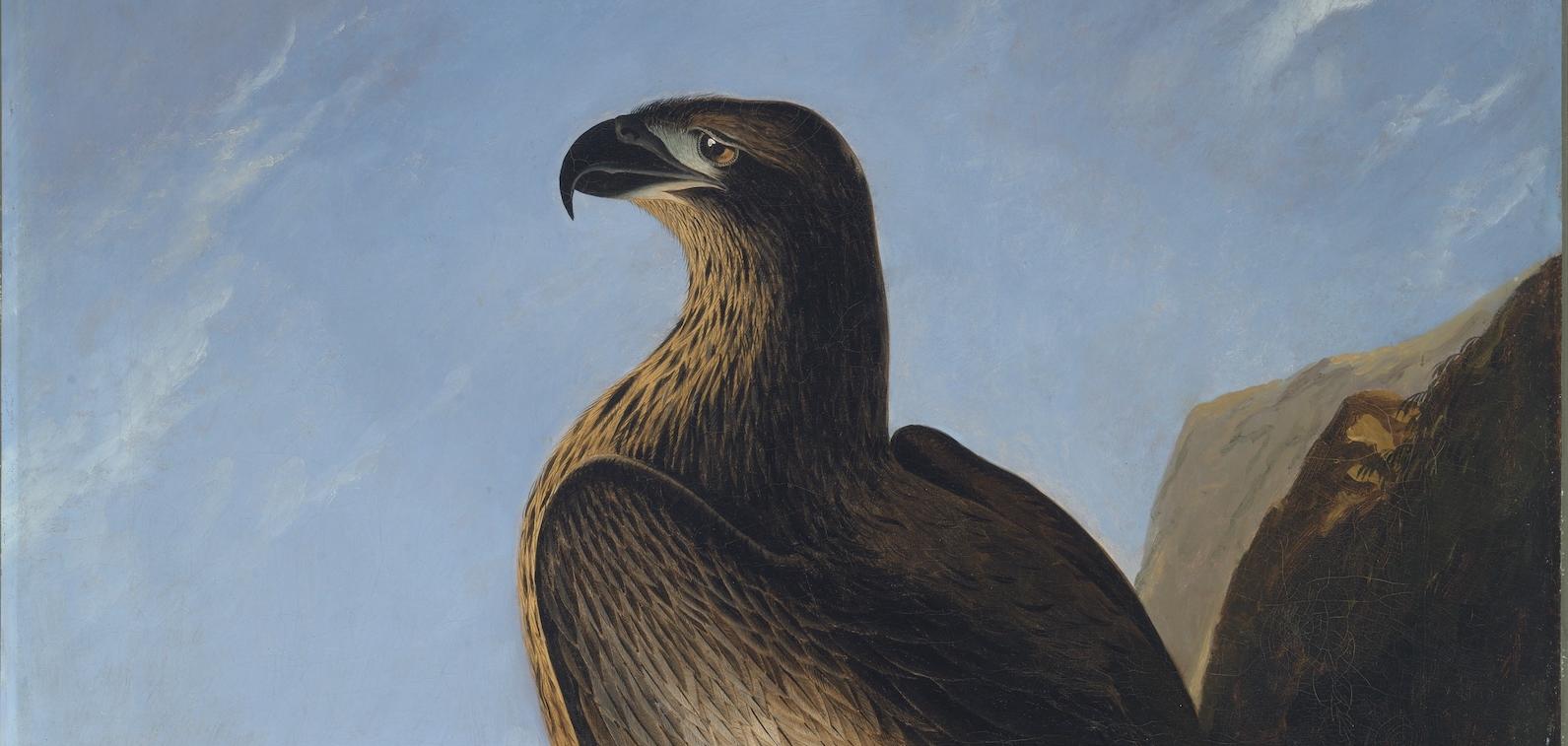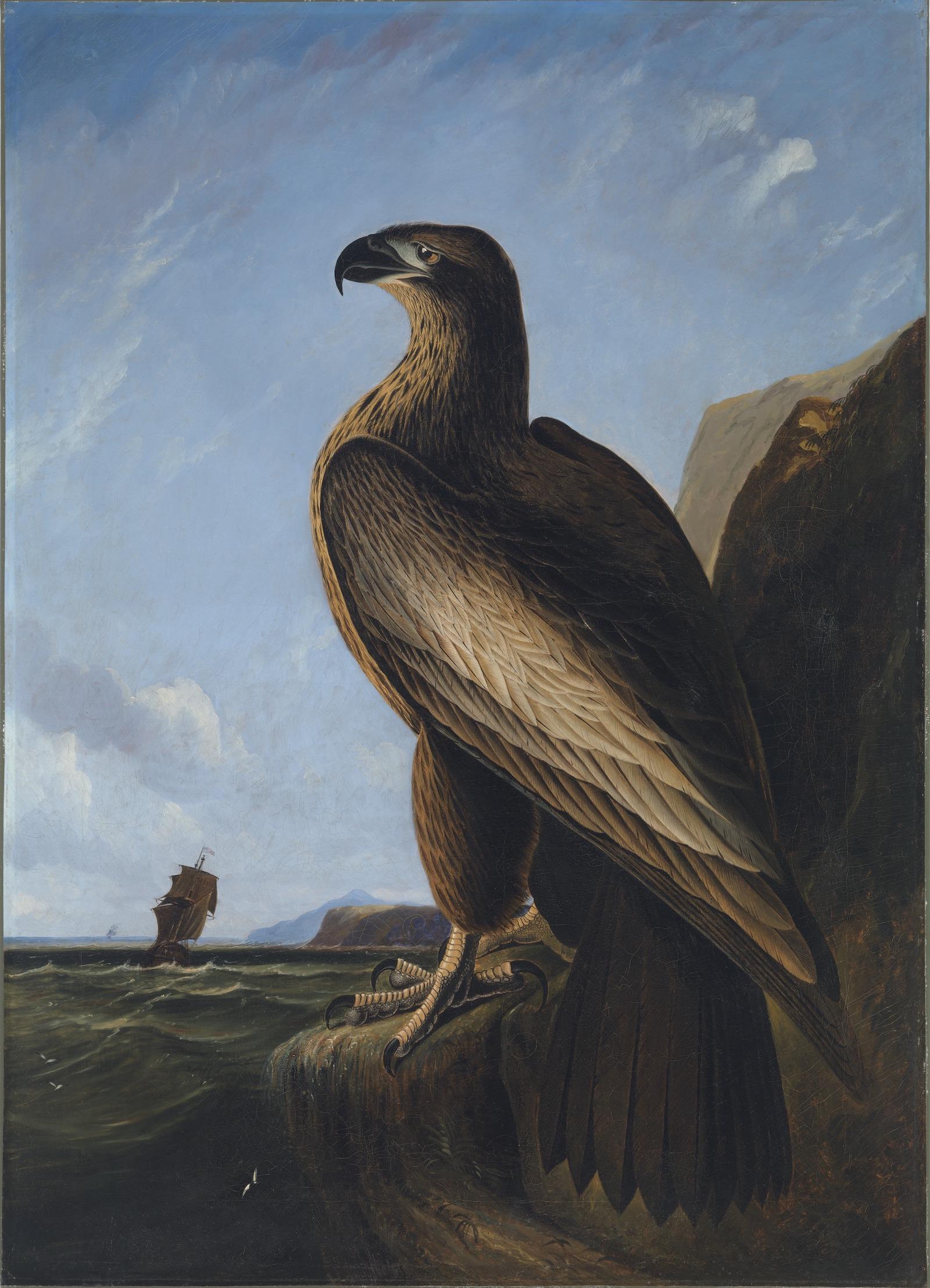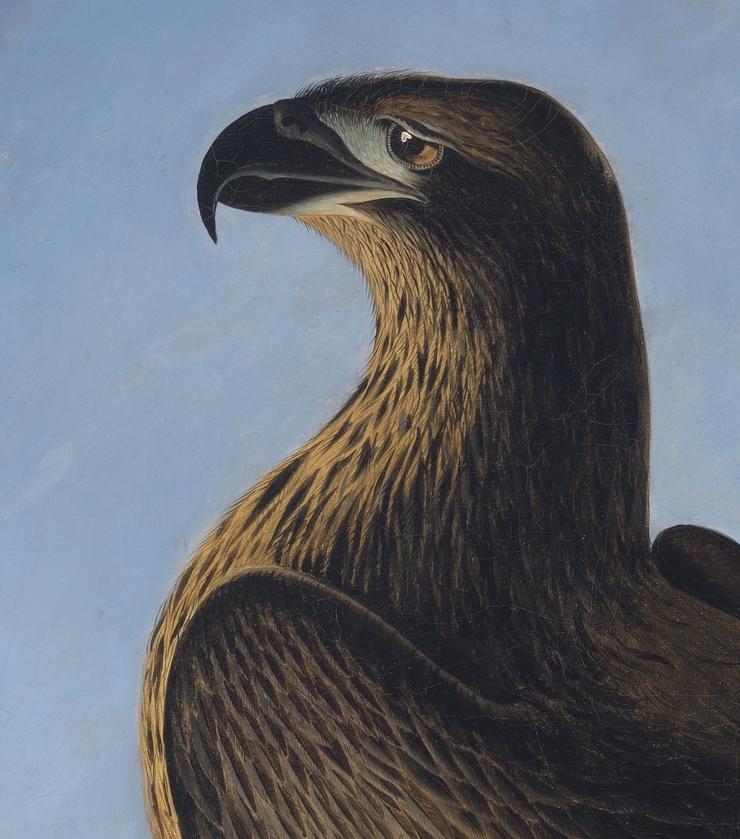Dismayed then, I was, to learn that, scientifically speaking, not only was the Bird of Washington wildly scientifically inaccurate, but Audubon knew it to be so at the time that it was created, according to modern scientific research.
As ornithologist and Drexel University graduate student Matthew R. Halley has noted in his multi-year, peer-reviewed, and published study—the “preponderance of evidence suggests that the Bird of Washington was an elaborate lie that Audubon concocted” to advance his own career and fortunes.
The works on paper are indeed fantastic, gorgeous artworks, each bird being shown with a unique personality in painstakingly vibrant ink that, as the Smithsonian Institute’s curator Eleanor Harvey notes to Art & Object, was an “extraordinarily expensive production.”
Harvey deliberately hung the piece within sight of Gilbert Stuart’s famed portrait of Washington. “I can't help but notice they have similar beaks. Well, noses. In other words, they both have a hooked 'nose' profile,” she tells Art & Object adding, “it’s just one way Audubon reinforced the symbolic connection between the bird and its namesake.”































